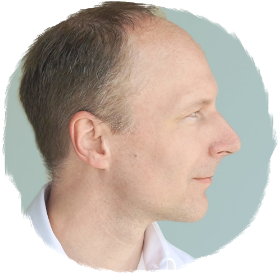If I would be a Physical Therapist… and had to design a movement based training program… I would either start with solutions to common problems, or more systematically with child developmental patterns.
Flexion. Extension. Rotation.
I would look at early childhood reflexes: the asymmetrical tonic neck reflex, the righting reflex, the withdrawal reflex, postures and responses to the fear of falling. And then progress to lessons that bring students up to sitting, standing, walking. I would certainly also look at object manipulation and handling. Walk along the lines of Occupational Therapy. I would probably have reading, writing, and anatomy on the curriculum as well.
But I am no Physical Therapist.
I would not design a training program like that. And I would certainly not start with sucking-like-a-baby or several days of curling-up-like-a-hedgehog lessons.
Instead.
I would probably start with focusing on abilities. And how to improve the seemingly un-improvable. I would – probably – start with the ability to sense the pull of gravity. Explore deeply what we’re working with, here on Earth, as upright walking mammals with a head that’s sticking out of the torso, arms, legs, bones, the ability to feel, improve, fall and rise again, and all that.
I would start on the floor. I would – probably – start with rolling from side-lying to lying on the back. And the other way round. And, the other way round. A roll over, not a push over. Staying as close to the floor as possible, at first. Postpone reach-ups to a later date. Start with rolling the eyes, the head, or start with rolling one leg, bending one knee. Or start with reaching like a skeleton, but in side-lying. I can think of 20+ different lessons from the top of my head.
I would work-in moments for improving the ability to sense, put-that-into-words, judge, and improve orientation, timing, movement quality, how things connect and don’t connect. Experience how the use of one shoulder, one leg, one arm, one side is as different from the other, just as our use of one hand is different from the other (right handed, left handed). And all that.
This is the best part: these lessons are surprisingly easy to do, the positions and movements available to almost everyone. They do feel extraordinarily good, and they leave you feeling extraordinarily well. Curious. I have learned something. I want more. Not only physically. These moments also give us a feeling of being acknowledged as individuals, respected, and being in the right place.
Plus, it immediately gives students something interesting, fun, engaging, to work with. A movement progression, growing in subject matter as well as difficulty. Something to practice at home. Something to get better at. They might even want to share what they’ve just learned with their own folks, or their own students.
In fact, creating own versions of the lessons, sharing them, and talking about them would be part of the curriculum.
That’s how I would start.

